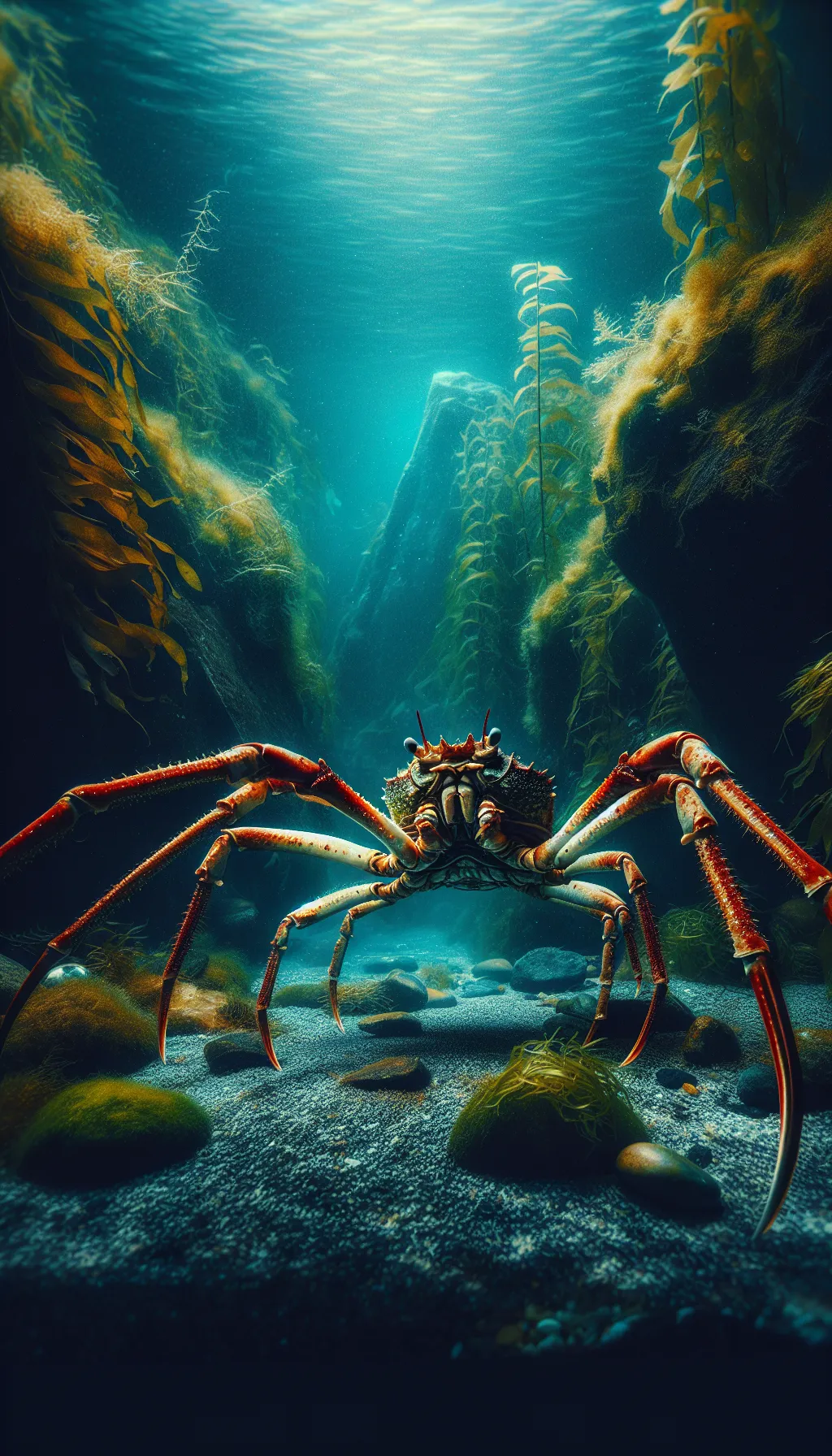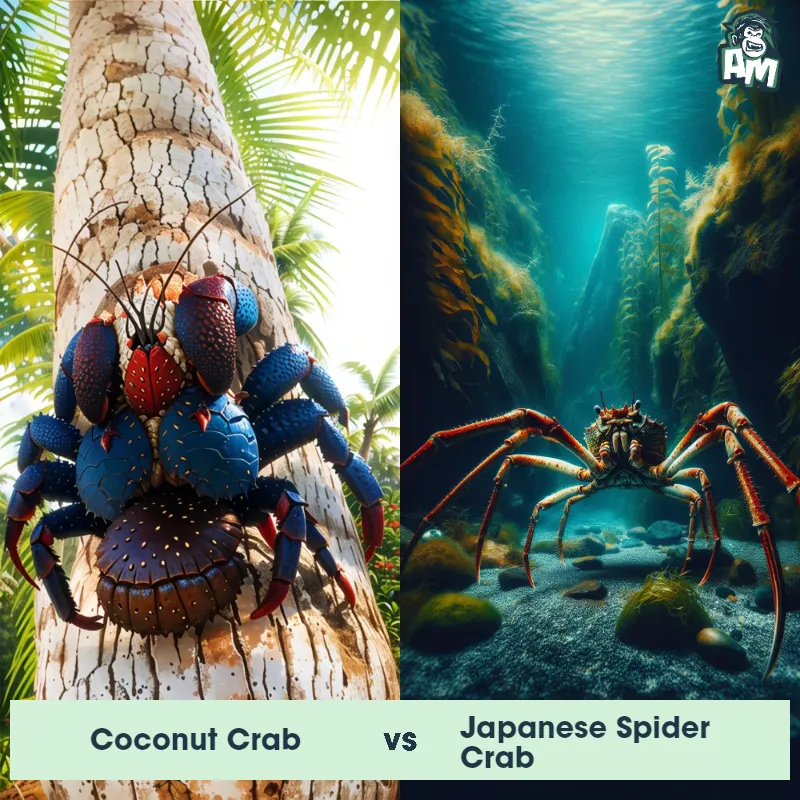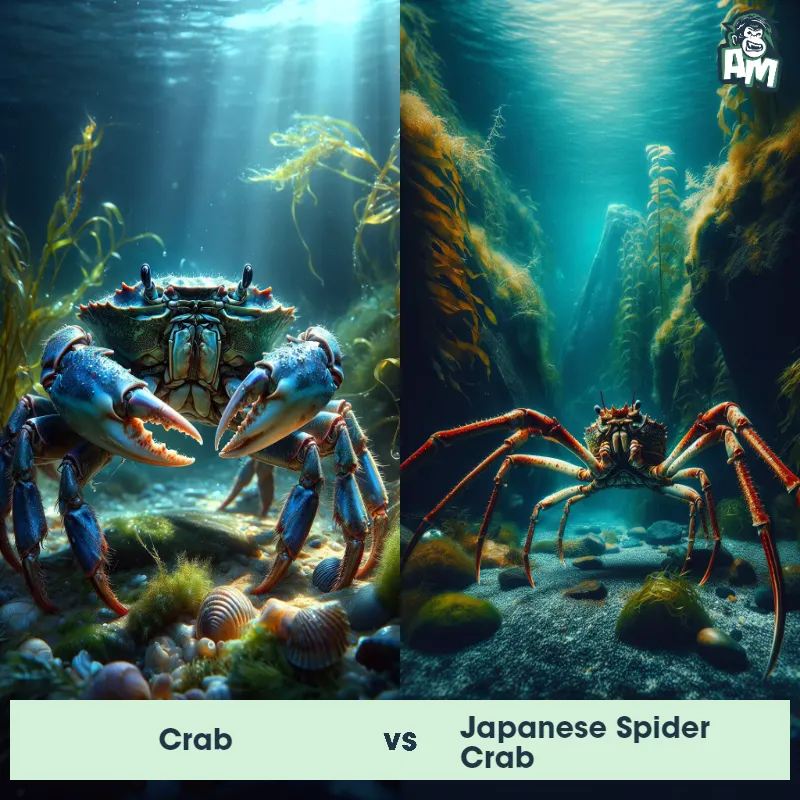The Japanese Spider Crab
The Japanese Spider Crab, also known as Macrocheira kaempferi, is a species of crab that is native to the waters surrounding Japan. It is widely recognized for its massive size, with a leg span that can reach up to 13 feet, making it the largest arthropod in the world. This crab can weigh up to 44 pounds and has a body covered in a reddish-brown exoskeleton. It features a unique body shape with a narrow, triangular abdomen and long, spindly legs that allow it to move gracefully underwater.

| Japanese Spider Crab | |
|---|---|
| Size | Up to 12 feet (3.7 meters) |
| Weight | Up to 42 pounds (19 kilograms) |
| Speed | 0.12mph (0.19km/h) |
| Key Strength | Sharp claws |
| Biggest Weakness | Unknown |
| Scientific Name | Macrocheira kaempferi |
| Family | Inachidae |
| Habitat | Pacific waters |
| Geography | Japan |
| Diet | Dead animals and small fish |
| Lifespan | 12 years - 15 years |

The Japanese Spider Crab
The Japanese Spider Crab, also known as Macrocheira kaempferi, is a species of crab that is native to the waters surrounding Japan. It is widely recognized for its massive size, with a leg span that can reach up to 13 feet, making it the largest arthropod in the world. This crab can weigh up to 44 pounds and has a body covered in a reddish-brown exoskeleton. It features a unique body shape with a narrow, triangular abdomen and long, spindly legs that allow it to move gracefully underwater.
Fun Fact: The Japanese Spider Crab is known for its extraordinary longevity, with individuals that can live for up to 100 years.
| Japanese Spider Crab | |
|---|---|
| Size | Up to 12 feet (3.7 meters) |
| Weight | Up to 42 pounds (19 kilograms) |
| Speed | 0.12mph (0.19km/h) |
| Key Strength | Sharp claws |
| Biggest Weakness | Unknown |
| Scientific Name | Macrocheira kaempferi |
| Family | Inachidae |
| Habitat | Pacific waters |
| Geography | Japan |
| Diet | Dead animals and small fish |
| Lifespan | 12 years - 15 years |
Japanese Spider Crab Matchups
We use AI to simulate matchups between the Japanese Spider Crab and other animals. Our simulation considers size, strength, and natural predatory behaviors to determine the most likely outcome.

Can't find the Matchup you want?
Create Your Own MatchupJapanese Spider Crab: Diet, Predators, Aggression, and Defensive Behaviors
What do Japanese Spider Crabs eat?
Japanese Spider Crabs are omnivorous scavengers, feeding on a variety of plant and animal matter. They primarily feed on algae, mollusks, dead fish, and other decaying organic material found on the ocean floor. They have been known to also feed on small fish, shellfish, and even carrion.
Do Japanese Spider Crabs have any predators?
While Japanese Spider Crabs do not have many natural predators due to their large size and tough exoskeleton, they are occasionally preyed upon by sharks, octopuses, and occasionally large fish like groupers. However, their biggest threats are human activities such as overfishing and habitat destruction.
Are Japanese Spider Crabs aggressive?
Japanese Spider Crabs are generally not aggressive towards each other or other creatures. They are known to be rather docile creatures that prefer to use their camouflage and defensive mechanisms rather than engage in aggressive behavior.
Do Japanese Spider Crabs fight?
Japanese Spider Crabs are not known to engage in physical fights with each other or other creatures. They are more likely to use their bulky size and intimidating appearance to ward off potential threats rather than resorting to physical confrontation.
How do Japanese Spider Crabs defend themselves?
Japanese Spider Crabs have developed various defense mechanisms to protect themselves from predators. Their first line of defense is their large size and sharp spines on their legs, which serve as deterrents to potential threats. Additionally, they can camouflage themselves by covering their bodies with debris from the ocean floor, making them blend in with their surroundings.
What is the biggest weakness of Japanese Spider Crabs in a fight?
Despite their formidable size and defenses, the biggest weakness of Japanese Spider Crabs in a fight is their relatively slow movement. Their heavy exoskeleton and large size make them less agile compared to other predators, making it difficult for them to evade fast-moving attackers.
Fun Fact: Despite its intimidating appearance, the Japanese Spider Crab is actually quite docile and poses no threat to humans. It primarily feeds on dead animals and other organic matter found on the ocean floor.
Fun Fact: Molting, the process of shedding its exoskeleton, is a crucial part of the Japanese Spider Crab's growth. During this process, the crab becomes vulnerable and seeks shelter until its new exoskeleton hardens, which can take several days.












